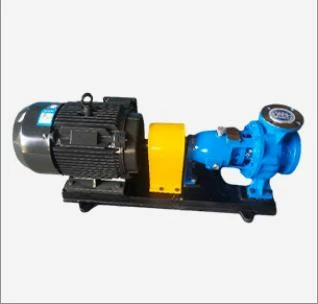TEL:
+86 13120555503
Shona
- Afrikaans
- Albanian
- Amharic
- Arabic
- Armenian
- Azerbaijani
- Basque
- Belarusian
- Bengali
- Bosnian
- Bulgarian
- Catalan
- Cebuano
- Corsican
- Croatian
- Czech
- Danish
- Dutch
- English
- Esperanto
- Estonian
- Finnish
- French
- Frisian
- Galician
- Georgian
- German
- Greek
- Gujarati
- Haitian Creole
- hausa
- hawaiian
- Hebrew
- Hindi
- Miao
- Hungarian
- Icelandic
- igbo
- Indonesian
- irish
- Italian
- Japanese
- Javanese
- Kannada
- kazakh
- Khmer
- Rwandese
- Korean
- Kurdish
- Kyrgyz
- Lao
- Latin
- Latvian
- Lithuanian
- Luxembourgish
- Macedonian
- Malgashi
- Malay
- Malayalam
- Maltese
- Maori
- Marathi
- Mongolian
- Myanmar
- Nepali
- Norwegian
- Norwegian
- Occitan
- Pashto
- Persian
- Polish
- Portuguese
- Punjabi
- Romanian
- Russian
- Samoan
- Scottish Gaelic
- Serbian
- Sesotho
- Shona
- Sindhi
- Sinhala
- Slovak
- Slovenian
- Somali
- Spanish
- Sundanese
- Swahili
- Swedish
- Tagalog
- Tajik
- Tamil
- Tatar
- Telugu
- Thai
- Turkish
- Turkmen
- Ukrainian
- Urdu
- Uighur
- Uzbek
- Vietnamese
- Welsh
- Bantu
- Yiddish
- Yoruba
- Zulu
Telephone: +86 13120555503
Email: frank@cypump.com
Feb . 19, 2025 03:47 Back to list
septic tank pumps
Septic tank systems are a crucial component in many residential and commercial properties, often located in areas where conventional sewer systems are unavailable. The functionality of these systems hinges significantly on various components, with septic pumps being one of the most critical. Understanding the intricacies of septic pumps not only aids in ensuring optimal system performance but also prolongs the lifespan of the entire septic system.
The health of your septic tank pump is directly linked to your wastewater management practices. Avoid flushing non-biodegradable items or pouring harsh chemicals and grease down drains, as these can clog systems or damage the pump. Utilizing water efficiently reduces the workload on the septic system, extending the lifespan of the pump and other components. Septic system pumps are available in various forms, including submersible pumps, sewage grinder pumps, and effluent pumps, each designed for different waste management needs. Submersible pumps are typically immersed in the tank and are effective in handling solid waste. Grinder pumps are specialized in breaking down solid waste to prevent clogs while being pumped to the main sewer line. Effluent pumps, on the other hand, are ideally used to pump out clear wastewater, void of solid waste, into the drain field. As an authority in septic systems, it is crucial to disseminate information about the environmental impacts and benefits of well-maintained septic systems. Properly functioning systems safeguard groundwater resources and reduce sewage pollution, thus contributing significantly to environmental conservation. Adopting best practices not only ensures personal health but also supports community well-being. In conclusion, managing septic tank systems efficiently involves selecting the right pump, ensuring its proper installation, and conducting consistent maintenance. The role of the septic pump is not merely functional; it exemplifies an integral part of a sustainable waste management solution. Achieving this involves leveraging expert guidance and maintaining adherence to recommended practices, ultimately ensuring the system's efficiency, reliability, and longevity. Whether upgrading an existing system or installing a new one, informed choices powered by professional insights and data are indispensable in protecting this significant asset.


The health of your septic tank pump is directly linked to your wastewater management practices. Avoid flushing non-biodegradable items or pouring harsh chemicals and grease down drains, as these can clog systems or damage the pump. Utilizing water efficiently reduces the workload on the septic system, extending the lifespan of the pump and other components. Septic system pumps are available in various forms, including submersible pumps, sewage grinder pumps, and effluent pumps, each designed for different waste management needs. Submersible pumps are typically immersed in the tank and are effective in handling solid waste. Grinder pumps are specialized in breaking down solid waste to prevent clogs while being pumped to the main sewer line. Effluent pumps, on the other hand, are ideally used to pump out clear wastewater, void of solid waste, into the drain field. As an authority in septic systems, it is crucial to disseminate information about the environmental impacts and benefits of well-maintained septic systems. Properly functioning systems safeguard groundwater resources and reduce sewage pollution, thus contributing significantly to environmental conservation. Adopting best practices not only ensures personal health but also supports community well-being. In conclusion, managing septic tank systems efficiently involves selecting the right pump, ensuring its proper installation, and conducting consistent maintenance. The role of the septic pump is not merely functional; it exemplifies an integral part of a sustainable waste management solution. Achieving this involves leveraging expert guidance and maintaining adherence to recommended practices, ultimately ensuring the system's efficiency, reliability, and longevity. Whether upgrading an existing system or installing a new one, informed choices powered by professional insights and data are indispensable in protecting this significant asset.
Share
Next:
Latest news
-
Reliable Non-Clog Sewage Pumps with GPT-4-Turbo Tech
NewsAug.04,2025
-
High-Performance Air Pumps for Sand & Gravel | Efficient Transport
NewsAug.03,2025
-
ISG Series Vertical Pipeline Pump - Chi Yuan Pumps Co., LTD.|Energy Efficiency, Corrosion Resistance
NewsAug.03,2025
-
ISG Series Pipeline Pump - Chi Yuan Pumps | Energy Efficiency&Compact Design
NewsAug.03,2025
-
ISG Series Vertical Pipeline Pump - Chi Yuan Pumps Co., LTD.|High Efficiency, Low Noise, Durable
NewsAug.02,2025
-
ISG Series Vertical Pipeline Pump - Chi Yuan Pumps | High Efficiency, Low Noise
NewsAug.02,2025










